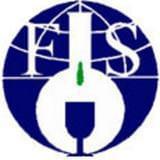本文系Journal of Future Foods原创编译,欢迎分享,转载请授权

近日,爱尔兰农业与食品发展部Teagasc国家食品研究中心Elham Alehosseini (第一作者)和缪松教授(通信作者)等在国际食品领域Top期刊
Journal of Future Foods(Q1,IF:7.2)在线发表了学术文章“Formulation factors influencing the production of dairy-free cheese alternatives”。

近年来,在食品专家的努力下,饮食中的蛋白质来源正在迅速变化。基于植物蛋白或实验室培养蛋白的新产品越来越多地被引入消费者市场。然而,食品行业在创造天然、创新、易得且营养丰富的无乳替代品方面面临着新的挑战。设计具有良好营养成分、生物利用度和可消化性的无乳奶酪替代品需要深入了解植物源成分的分子特性、其结构组装方式及它们在最终产品理化性质和感官特性中的作用。也意味着基于对植物性原料特性的深刻认知,并通过对分子间相互作用的智能化调控,这些原料可以被用于生产在特性上与乳制品相当的无乳制干酪替代品。因此,本综述旨在综合当前关于无乳制干酪替代品生产技术及其设计关键影响因素的研究进展。通过探讨碳水化合物、蛋白质及其他配料之间的相互作用,以及它们在复制传统乳制干酪功能特性与质构方面的能力,本综述为开发高品质的无乳制干酪替代品提供有价值的见解。在这些替代品的设计中,通常采用分级分离和组织破坏等路径。植物多糖和蛋白质表面基团数量与分布的差异,会显著影响其与其他分子的相互作用能力。随着植物大分子浓度、键合强度和交联密度的降低,凝胶强度也随之下降。而热处理能够使蛋白质解折叠并降低其净电荷,此时疏水作用成为植物基干酪中蛋白质—蛋白质相互作用的主要驱动力。相比之下,乳制干酪的三维结构则是通过疏水相互作用、氢键以及钙桥的协同作用来稳定的。

图1 从分馏途径和组织破坏途径实现原料向无乳奶酪替代品的相变
奶酪在人类营养中发挥着重要作用,这也催生了对在质构和感官可接受性方面与传统乳制奶酪相似的无乳制替代品的巨大需求。无乳制奶酪配方中所使用的成分(如水胶体、淀粉、蛋白质、膳食纤维和脂肪)以及加工工艺,对产品最终的质构与功能性有着显著影响。因此,理解这些成分之间的相互作用,对于优化无乳制奶酪替代品的质量至关重要。尤其是,蛋白质网络在质构形成中起着核心作用,而缺乏合适的蛋白质网络常导致植物基奶酪与乳制奶酪之间存在显著差异。此外,奶酪基质中分子间的相互作用受环境条件、分子特性、生化过程以及加工技术等多种因素影响。与乳制奶相比,植物奶的凝固效率较低,这为生产带来了更多复杂性。植物生物大分子的相互作用,尤其是它们的交联行为,决定了产品的质构、流变特性和稳定性。碳水化合物因其分子性质和功能的多样性,必须经过合理选择与优化才能实现理想的质构。使用蜡质淀粉与蛋白质的组合可改善熔融性能,而乳化剂、盐类及抗菌剂对于提升感官质量、安全性和保质期同样不可或缺。营养素的微胶囊化也为植物基奶酪替代品的营养强化提供了可行策略。通过优化配方、调整固态脂肪含量和脂肪比例,制造商可以提升质构、可熔性以及整体消费者接受度。
进一步的研究有必要深入解析无乳制奶酪替代品中的分子相互作用与结构,并探讨它们与感官及理化特性之间的关系。重点研究方向包括改善蛋白质网络、优化植物奶的凝固过程以提升质构和功能性。此外,通过优化碳水化合物、脂肪和蛋白质的配方,使其更好地模拟乳制成分,并探索新的微胶囊化技术、乳化剂和凝固剂,将有助于提升产品质量、稳定性和营养价值,从而满足消费者需求并确保市场成功。
第一作者

Elham Alehosseini博士于2021年在伊朗的Gorgan University of Agricultural Sciences and Natural Resources获得博士学位,目前获得玛丽居里博士后奖学金资助项目 (MSCA Postdoctoral Fellowship),在爱尔兰农业与食品发展部Teagasc国家食品研究中心担任博士后。她主要的研究方向为设计植物基奶酪替代品,致力于解决学术研究和工业生产发展之间的差距。以第一作者发表SCI文章10余篇。
通信作者
缪松,教授,现为爱尔兰农业与食品发展部Teagasc国家食品研究中心终身高级研究员、爱尔兰国立科克大学(UCC)和爱尔兰国立都柏林大学(UCD)博士生导师,长期从事食品材料及贮藏加工技术领域基础理论和应用研究,曾在爱尔兰国家生物技术中心从事博士后研究,在荷兰联合利华全球研发中心任研发经理及研发专员。缪松博士自任职Teagasc国家食品研究中心以来,长期与多所高校及科研院所、跨国企业保持密切合作关系,主持或参与多项国家和欧盟项目,发表SCI研究论文250余篇,担任
Journal of Future Foods
Agricultural Products Processing and Storage
Frontiers in Nutrition等期刊副主编,
Food Science and Human Wellness
Food Science and Nutrition
Drying Technology
Applied Food Research
Foods等多种国际食品期刊编委;2021年以来入选全球前2%顶尖科学家榜单,2024年科睿唯安(Clarivate)高被引科学家,荣获2024年度“欧洲华人十大科技领军人才”称号;主要研究方向为:食品物性材料学,食品干燥与造粒,粉末技术,益生菌和活性分子包埋,食品结构及传递体系设计,食品加工与功能性,乳品技术以及植物基功能食品配料等。
Formulation factors influencing the production of dairy-free cheese alternativesElham Alehosseinia, Paul L.H. McSweeneyb, Song Miaoa*
aTeagasc Food Research Centre, Moorepark, Fermoy, Co, Cork, P61 C996, Ireland
bSchool of Food and Nutritional Sciences, University College Cork, T12 Y337, Ireland
* Corresponding authors.
Abstract
Recently, with the efforts of food specialists, protein sources in the diet is rapidly changing. Consequently, novel products based on plant proteins or lab-grown proteins are increasingly being introduced to consumers. However, the food industry is facing new challenges in creating natural, innovative, accessible, and nutritious dairy-free alternatives. Designing dairy-free cheese alternatives with beneficial nutritional profiles, bioavailability, and digestibility requires a thorough understanding of the molecular characteristics of plant-derived ingredients, their structural assembly, and their role in physicochemical and sensory properties of the final product. In other words, with a deep knowledge of the nature of plant-based ingredients and the intelligent control of intermolecular interactions, these ingredients can be used to produce dairy-free cheese alternatives with the same characteristics as dairy products. Therefore, this review aims to synthesize current knowledge on production techniques and key factors influencing the design of dairy-free cheese alternatives. By examining the interactions between carbohydrates, proteins, and other ingredients, as well as their ability to replicate the functional and textural properties of traditional dairy cheeses, this review provides valuable insights for the development of high-quality dairy-free cheese alternatives. In the design of these alternatives, fractionation and tissue disruption routes are employed. The difference in the number and distribution of their surface groups has a significant effect on ability of plant polysaccharides and proteins to interact with other molecules. Gel strength decreases with decreasing plant biopolymer concentration, bond strength, and cross-linking density. While heat treatment can unfold proteins and minimize their net charge, the hydrophobic attraction becomes the primary driver of protein-protein interactions in plant-based cheeses. In contrast, the 3D-structure of dairy cheeses is stabilized through a combination of hydrophobic interactions, hydrogen bonds, and calcium bridges.
Reference:
ALEHOSSEINI E, MCSWEENEY P L H , MIAO S. Formulation factors influencing the production of dairy-free cheese alternatives[J]. Journal of Future Foods, 2025. DOI:10.1016/j.jfutfo.2024.10.013.

文章翻译由作者团队提供
编辑:龚艺;责任编辑:梁安琪
封面图片来源:摄图网
特别声明:以上内容(如有图片或视频亦包括在内)为自媒体平台“网易号”用户上传并发布,本平台仅提供信息存储服务。
Notice: The content above (including the pictures and videos if any) is uploaded and posted by a user of NetEase Hao, which is a social media platform and only provides information storage services.

 北京
北京
























































